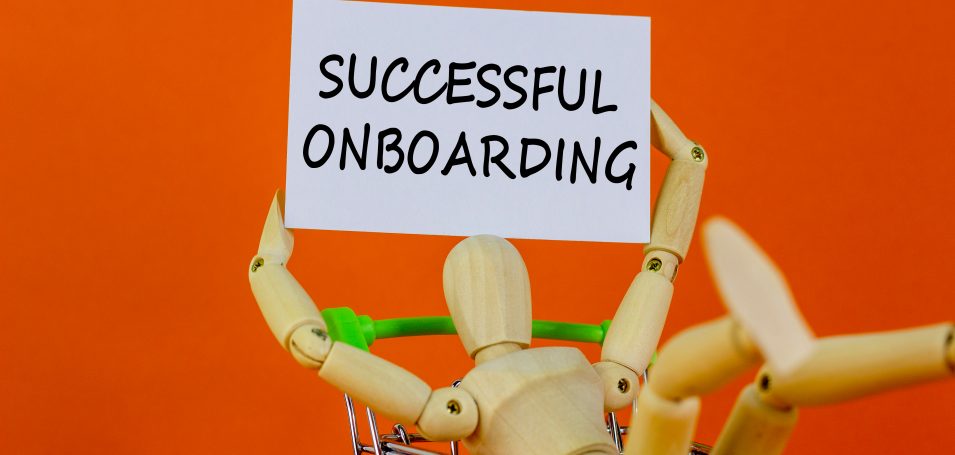What do you think of when you hear the term “blended learning?” A blended – or hybrid – approach to customer learning is any combination of on-demand resources, courses, and materials in addition to scheduled live training, whether that takes place face-to-face via Instructor-led Training (ILT), or digitally through Virtual Instructor-led Training (VILT). Over the past few years, rapid digital transformation and remote work has pushed many companies to switch up their strategies for customer learning, converting ILT to VILT, and moving from a reliance on in-person training to an all-VILT or total eLearning approach. But are they missing a trick? Here’s why a comprehensive blend of both on-demand and ILT & VILT is key to achieving customer engagement.
Blended learning in a customer training platform promotes deeper learning
Adding contrast to the types of content that you offer can help to combat distraction – which is known to be the ultimate nemesis of effective learning, especially in a virtual environment.
This contrast can be created in a number of ways. For example, you could provide different delivery styles by hiring more than one instructor to teach a course, or ask instructional designers to build multiple kinds of dynamic visual content. However, these are both expensive options. It’s equally effective to offer completely different kinds of content within the same course, for example an on-demand playground environment that you can test a customer’s knowledge on after a live session is complete, a module or two that are entirely self-serve, or even something as simple as a snazzy printable that can be used on the fly.
On-demand pre-course and post-course content can also augment the ILT and VILT experience, and improve the efficacy of the webinar or training session itself. Consider a blended experience that includes a pre-course quiz where the instructor can get a feel for any knowledge-gaps in the class ahead of time, or a post-event assessment where learning experience designers can measure the impact and knowledge transfer of the course.
For this to work, an organization’s in-person training and on-demand content needs to connect into one seamless learning journey rather than exist in silos, or businesses won’t be able to track or measure the content of the experience from end-to-end, or provide personalized support and outreach where it’s necessary.
Hybrid learning experiences fit better into your customer’s everyday flow of work
Josh Bersin coined the term “learning in the flow of work” in the Harvard Business Review back in 2019 with employee training in mind, and yet it certainly describes the new paradigm for the challenges of customer training, too.
We all recognize the perfect description that Bersin provides, a situation where “the urgency of work trumps the luxury of learning.” Most customers feel that they can’t take time out of their working day to learn, even when they are well aware that the skills which they could add to their bow with this training would support them in doing their job with greater speed or accuracy, and could even level up their careers.
“Through good design thinking and cutting-edge technology, we can build solutions and experiences that make learning almost invisible in our jobs,” Bersin continues. There’s no escaping that achieving this vision relies heavily on blended learning, offering in-app tutorials, quick toolbar tips, on-demand video content or micro-learnings, and context-sensitive pop-ups or personalized learning for the moment of need.
If you combine these tools with ILT and VILT sessions, you’re not only offering customers with in-the-moment education, you’re also helping with knowledge transference and encouraging behavioral change. The forgetting curve is a well-known phenomenon where if the information a person has learned from training isn’t applied within 6 days, 75% of it will be forgotten. When ILT is combined with learning in the flow of work, customers have a chance to practice what they’ve learned soon after the training session, and be reminded to put it into action, aiding knowledge retention and impact.
Face to face sessions are more powerful when supplemented by resources
It’s no surprise that when customers are given additional resources outside of an in-person training session, the event will have greater impact. After all, a one-off hour-long session is easy to forget as soon as the instructor says goodbye. Having a workbook to download with key takeaways, or being offered additional materials for those who want to go deeper on a topic can make a real difference to customer engagement.
Studies have shown that it’s also extremely powerful to be able to offer social features such as collaboration and sharing, taking blended learning to a more dynamic level. According to the 2021 LinkedIn Workplace Learning Report, “Learners who use social features — Q&A, course shares, and learning groups — watch 30x more hours of learning content than learners who don’t.”
It hardly matters which way round the connection works. Perhaps being engaged with learning content leads to increased social sharing, because engaged learners want to tell their friends. On the other hand, having the options for collaborative blended learning experiences, and the technology to share and advocate for learning on-demand may be what is increasing engagement in the first place, and could be the reason for the positive impact on the amount of learning an individual completes.
What’s more important than which fact influences the other, is that social and collaborative learning features are becoming increasingly popular in online learning. With such an obvious connection between these features and customer engagement, they should be high on the roadmap of any savvy customer education function.
The LinkedIn Learning Report continues, “Since the pandemic struck… there’s been a 1,100% increase in people joining Learning Groups… a 225% increase in courses shared with a learner’s professional network, and a 121% increase in activity (that includes both learners and instructors) in course Q&As.” Organizations who don’t have the technology to create a blended learning experience that includes these features will soon be left behind.
Next on your to-do list: Connecting VILT/ILT with a feature-rich, on-demand library
The right technology can revolutionize the way you offer customer training, seamlessly connecting ILT and VILT sessions with your on-demand content library, and offering the visibility and control over learner data to track engagement along the way.
A customer learning management platform allows you to intuitively create blended learning paths, customize and build personalized courses, and even bake in certifications and assessments at key moments in the learning journey, offering your customers a much more holistic experience that promotes deeper learning and customer engagement.
Want to see how it works in practice? Let’s schedule a demo



